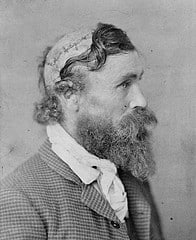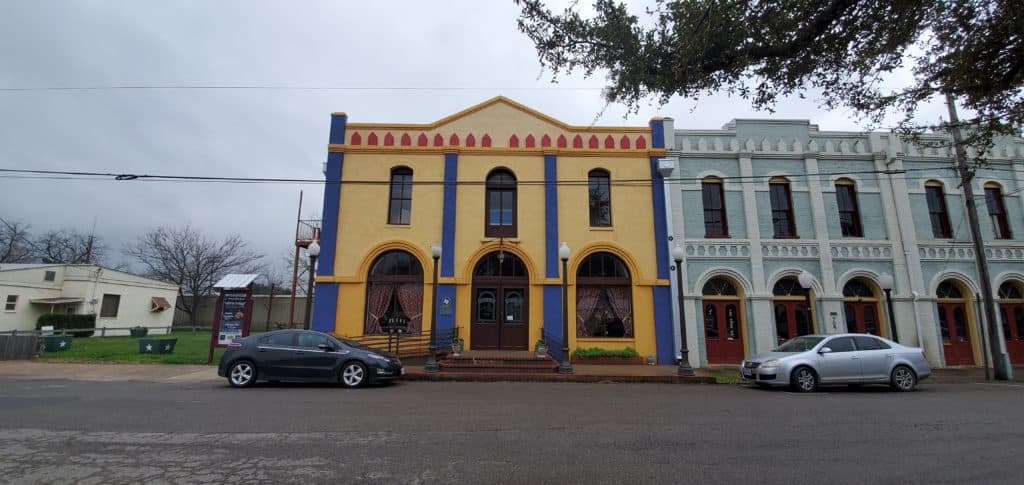Although Bastrop was one of the earliest permanent settlements in Texas, the town’s history doesn’t begin with the state, or even with the early settlers.
Long before, Bastrop County’s Lost Pines were a settlement and hunting site for Native American tribes like the Tonkawa for hundreds, and even thousands of years.

In fact, when the Hyatt Regency Lost Pines Resort and Spa was built in the mid-2000s, evidence was found of campsites and settlements dating back over 2,000 years!
Settling Bastrop
The first semi-permanent settlement in Bastrop was the Spanish fort Puesta del Colorado, established at the crossing of Old San Antonio Road and the Colorado River in 1804.
16 years later, Moses Austin obtained a land grant from the Governor of Spanish Texas, along with permission to settle 300 families in the territory. Moses Austin died shortly after, but his son, Stephen F. Austin, carried out his plans instead.
After the first 300 families were settled, Austin continued to establish small settlements throughout Texas, including 100 families in what would become Bastrop. Austin nicknamed the settlement the “Little Colony,” but later named it for his friend Felipe Enrique Neri, Baron de Bastrop. This emigrant from the Netherlands was a shady character, but he helped Austin to get his land grants and served as Austin’s land commissioner.
The Resilience of Josiah Wilbarger

One of those original settlers in Bastrop was Josiah Wilbarger, whose land included the current site of Barton Hill Farms.
In 1833, Wilbarger was a member of a scouting party near Bastrop when a group of Comanches attacked. Two men escaped, and two others were killed. As for Wilbarger, after receiving both arrow and bullet wounds, he was scalped by the Native Americans and left to die. He propped himself up against a tree, and waited for the end.
As he drifted in and out of consciousness, Wilbarger saw a vision of his sister, Margaret, urging him to stay where he was, because help was coming. At about the same time, one of the attack survivors reached friend Reuben Hornsby, and told him what had happened. That night, Hornsby’s wife, Sarah, dreamt that Wilbarger was still alive under an oak tree. She insisted that her husband go to look for him.
Hornsby was surprised to find Wilbarger, still alive, and right where his wife had indicated.
Wilbarger survived. He was amazed to learn that his sister — the one who had appeared to him in a vision — had died the day before the attack. He lived for another 11 years, and continued to work the land that we care for today!
Bastrop and Texas Independence
Although it was a small colony, Bastrop was an integral part of the fight for Texas’ Independence.
The first Texan killed in the Revolution, Richard Andrews, was from Bastrop. Three of the signers of the Texas Declaration of Independence hailed from the “Little Colony,” too. And settlers of the area fought and died at both the Alamo and the Battle of San Jacinto, where the Mexican army was defeated.
Unfortunately, the town was entirely destroyed in 1836 when the Mexican army razed it as they chased settlers east across the territory. It was rebuilt and incorporated under Texas law in 1837.
Bastrop thrived over the next 30 years, providing timber from the Lost Pines to the surrounding area, especially Austin, the newly formed capital of the Republic of Texas.
A fire in 1862 destroyed most of the downtown, but it was rebuilt in the following decades, along with many charming Victorian-style houses and buildings which are still standing today.
Bastrop in the 1900s
Bastrop grew quickly in the early 1900s, although it’s always been a small town. The local lumber and coal industries dominated industry until the 1940s, when Camp Swift was established nearby. The population of the town swelled to 5,000 as the camp filled with troops training to go overseas.
After the camp emptied when the war ended, quiet came back to the town. Although Bastrop is the county seat of Bastrop County, it has embraced its small town roots as Austin continues to grow and expand to the east.
In 1979, the National Register of Historic Places selected 131 buildings and sites to add to its listings. We’re now considered the “Most Historic Small Town in Texas.”

Bastrop Today
Located within a short drive of Austin, Bastrop is the perfect place for a day trip or a weekend getaway. As you walk through our charming downtown and take in the sights of the Colorado River, remember that the history of Bastrop is the history of Texas.
Sources:

